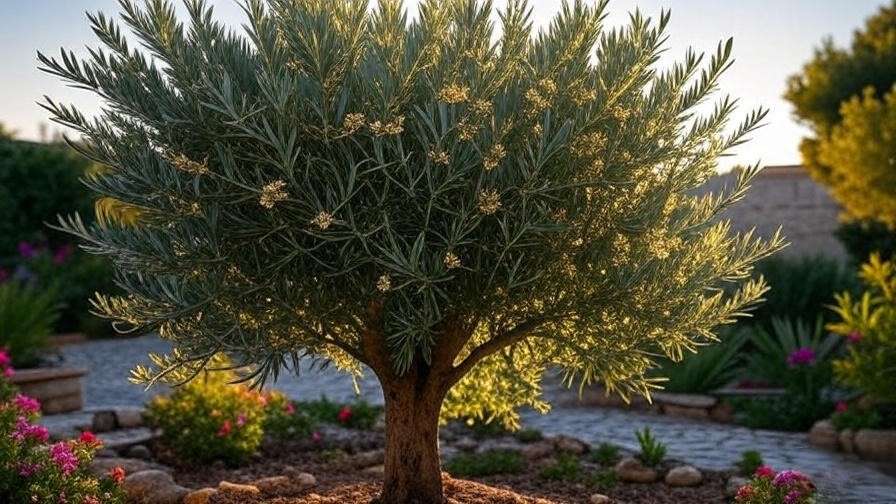Imagine transforming your garden into a Mediterranean oasis with the elegant, silver-green foliage of a Wilsonii olive tree. This fruitless variety, known for its stunning aesthetic and low-maintenance charm, is a favorite among gardeners seeking beauty without the mess of fruit. Whether you’re a beginner or a seasoned plant enthusiast, growing a thriving Wilsonii olive tree can feel daunting if you’re unsure about its care needs. From improper watering to pruning mistakes, common pitfalls can hinder its growth. In this comprehensive guide, we’ll walk you through expert-backed tips to ensure your Wilsonii flourishes, adding timeless elegance to your landscape. Ready to create a vibrant, drought-tolerant masterpiece? Let’s dive in! 🌞
1. Understanding the Wilsonii Olive Tree 🌳
1.1 What Makes the Wilsonii Olive Tree Special? ✨
The Wilsonii olive tree (Olea europaea ‘Wilsonii’), a fruitless cultivar of the classic olive tree, is prized for its ornamental appeal. Native to Mediterranean regions, this evergreen boasts silvery-green leaves, gnarled branches, and a graceful, sculptural form. Unlike fruiting olive varieties, the Wilsonii produces no messy olives, making it ideal for clean, low-maintenance landscapes. It thrives in USDA Hardiness Zones 8–11, tolerating heat, drought, and poor soils with ease. Its versatility suits various garden styles, from coastal retreats to urban patios, offering year-round beauty with minimal fuss.
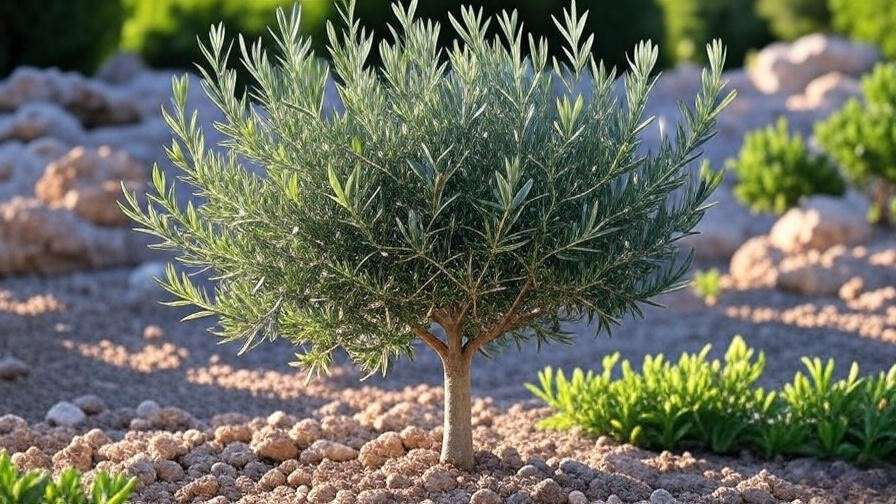
1.2 Ideal Uses for the Wilsonii Olive Tree 🏡
The Wilsonii shines as a versatile landscaping star. Use it as a focal point in a Mediterranean-inspired garden, a privacy screen along property lines, or a potted accent on patios. Its compact growth (typically 15–25 feet tall) makes it suitable for smaller spaces, while its drought tolerance appeals to eco-conscious gardeners. Compared to fruiting olives, the Wilsonii eliminates cleanup concerns, making it a top choice for homeowners seeking elegance without extra work.
Expert Insight: “The Wilsonii olive tree is a designer’s dream,” says Dr. Maria Gonzalez, a horticulturist with over 20 years of experience. “Its clean, fruitless nature and architectural form make it a standout for modern landscapes.”
2. Optimal Growing Conditions for Wilsonii Olive Trees ☀️
2.1 Sunlight Requirements 🌞
To thrive, Wilsonii olive trees need full sun—6 to 8 hours of direct sunlight daily. This ensures vibrant foliage and robust growth. If your garden has partial shade, position the tree where it receives morning sun to avoid weak, leggy growth. Assess your yard’s light patterns by observing sun exposure throughout the day, especially in summer. For urban settings, ensure nearby buildings or trees don’t cast prolonged shade.
2.2 Soil Preferences 🌍
Well-draining soil is non-negotiable for Wilsonii olive trees. They prefer sandy loam with a pH of 6.0–8.0 but can tolerate rocky or poor soils. Test your soil’s drainage by digging a 12-inch hole, filling it with water, and timing how long it takes to drain (ideally under 2 hours). If drainage is poor, amend with sand or gravel, or consider raised beds. Avoid heavy clay soils, which can cause root rot. A soil test kit can confirm pH and nutrient levels, guiding amendments like lime (for acidic soils) or sulfur (for alkaline soils).
| Soil Type | Suitability | Amendments Needed |
|---|---|---|
| Sandy Loam | Ideal | Minimal |
| Clay | Poor | Add sand, gravel |
| Rocky | Good | Add organic matter |
2.3 Climate and Hardiness ❄️☀️
Wilsonii olive trees thrive in Mediterranean-like climates—hot, dry summers and mild winters. They’re hardy in USDA Zones 8–11 but can tolerate brief cold snaps down to 15°F (-9°C). In cooler regions, plant in sheltered spots (e.g., south-facing walls) to minimize frost damage. For container-grown trees in colder zones, move pots indoors or to a greenhouse during winter. Mulch roots with 2–3 inches of bark to insulate against freezes.
Pro Tip: In marginal climates, use frost cloths during unexpected cold snaps to protect young trees.
3. Planting Your Wilsonii Olive Tree 🌱
3.1 Choosing the Right Tree 🛒
Select a healthy Wilsonii from a reputable nursery. Look for vibrant, silvery leaves, a sturdy trunk, and a well-developed root system (check for white, firm roots if potted). Avoid trees with yellowing leaves or signs of pests. Young trees (1–2 years old) establish faster than older ones, making them ideal for beginners.
3.2 Step-by-Step Planting Guide 📋
Plant in spring or early fall for optimal root establishment. Follow these steps:
- Choose a Site: Select a sunny, well-draining spot with at least 10–15 feet of space for mature growth.
- Dig the Hole: Make it twice as wide and as deep as the root ball (e.g., 24 inches wide for a 12-inch root ball).
- Amend Soil: Mix native soil with 20% compost or sand to improve drainage.
- Plant: Place the tree so the root crown sits slightly above ground level. Backfill and tamp gently.
- Water: Soak thoroughly after planting to settle roots.
- Mulch: Apply 2–3 inches of organic mulch (e.g., bark) around the base, keeping it 2 inches from the trunk.
For multiple trees, space them 10–20 feet apart to allow air circulation and prevent competition.
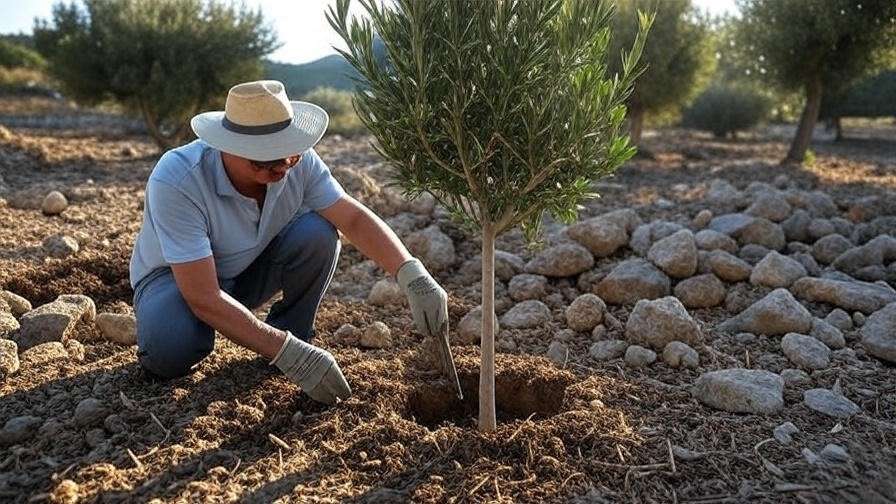
3.3 Container vs. In-Ground Planting 🪴
In-Ground: Best for permanent landscapes; allows natural root expansion. Ensure excellent drainage to prevent root rot.
Container: Ideal for patios or colder climates. Choose a pot at least 18–24 inches wide with drainage holes. Use a well-draining potting mix (e.g., cactus blend). Repot every 2–3 years to refresh soil and accommodate growth.
Checklist for First-Time Planters:
- Confirm full-sun location
- Test soil drainage
- Use a pot with drainage holes (if container planting)
- Water deeply after planting

4. Essential Care Tips for a Thriving Wilsonii Olive Tree 🌿
4.1 Watering Needs 💧
Wilsonii olive trees are drought-tolerant once established but need consistent moisture during their first 1–2 years. Water deeply every 7–10 days, allowing the top 2 inches of soil to dry between sessions. In hot climates, increase frequency slightly during summer. Overwatering is a common mistake—watch for soggy soil or yellowing leaves. For container trees, ensure pots drain fully to avoid waterlogging.
Signs of Watering Issues:
- Overwatering: Yellow leaves, soft roots, or fungal growth.
- Underwatering: Wilting, dry leaves, or slow growth.
Adjust watering based on rainfall and season (reduce in fall/winter).
4.2 Fertilizing for Optimal Growth 🌾
Fertilize Wilsonii olive trees in spring and early summer with a balanced, low-nitrogen fertilizer (e.g., 10-10-10). Apply 1–2 pounds per tree, spreading evenly around the drip line. Over-fertilizing can cause excessive leaf growth at the expense of root health, so avoid high-nitrogen formulas. Organic options like compost tea or fish emulsion work well for sustainable gardening. Test soil annually to monitor nutrient levels and avoid deficiencies (e.g., yellowing from lack of nitrogen or magnesium).
4.3 Pruning and Shaping ✂️
Pruning maintains the Wilsonii’s shape, promotes airflow, and removes dead or damaged branches. Prune in late winter or early spring before new growth begins. Follow these steps:
- Remove Dead Wood: Cut away any brown or brittle branches.
- Shape the Tree: Trim for a single trunk (standard form) or multi-stem (shrub-like) look.
- Thin Crowded Areas: Improve airflow by removing overlapping branches.
- Cut Cleanly: Use sharp, sanitized shears to prevent disease.
Avoid heavy pruning, which can stress the tree. For young trees, focus on establishing a strong structure.
Common Pruning Mistakes:
- Cutting too close to the trunk (leave a small collar).
- Pruning during active growth (summer/fall).
- Removing more than 25% of the canopy at once.
Pro Tip: Watch a pruning tutorial video or sketch a diagram of proper cuts to visualize the process.
5. Protecting Your Wilsonii Olive Tree from Pests and Diseases 🐞
5.1 Common Pests 🕷️
While Wilsonii olive trees are relatively pest-resistant, they can occasionally attract insects like scale, aphids, or spider mites. Here’s how to manage them:
- Scale Insects: Small, waxy bumps on stems or leaves. Treat with neem oil or horticultural soap, applied every 7–10 days until gone.
- Aphids: Tiny sap-sucking pests causing curled leaves. Spray with a strong water jet or use insecticidal soap.
- Spider Mites: Fine webbing and stippled leaves indicate their presence. Increase humidity and apply neem oil.
Prevention Tips:
- Maintain tree health through proper watering and fertilization to deter pests.
- Inspect regularly, especially under leaves and along stems.
- Encourage natural predators like ladybugs by planting companion plants (e.g., yarrow).
5.2 Diseases to Watch For 🦠
Wilsonii olive trees are susceptible to fungal diseases in poorly drained conditions. Common issues include:
- Verticillium Wilt: Caused by soil-borne fungi, leading to yellowing and wilting branches. Remove affected branches and avoid overwatering. No chemical cure exists, so prevention is key.
- Root Rot: Caused by waterlogged soil. Symptoms include drooping leaves and soft, dark roots. Improve drainage and reduce watering to manage.
- Leaf Spot: Small, dark spots on leaves. Apply a copper-based fungicide and remove affected debris.
Prevention Strategies:
- Ensure well-draining soil to avoid fungal growth.
- Sanitize pruning tools with a 10% bleach solution to prevent disease spread.
- Remove fallen leaves and debris around the tree base.
Expert Insight: Dr. Emily Carter, a plant pathologist, advises, “Early detection is critical for managing olive tree diseases. Regular inspections and proper drainage can prevent most issues.”
6. Seasonal Care for Wilsonii Olive Trees 📅
6.1 Spring and Summer Care 🌸
Spring and summer are the Wilsonii’s active growth seasons. Focus on:
- Watering: Increase frequency during hot, dry spells (every 5–7 days for young trees).
- Fertilizing: Apply a balanced fertilizer in early spring to support new growth.
- Pest Monitoring: Check for aphids or spider mites, especially in warm weather.
- Mulching: Add 2–3 inches of organic mulch (e.g., wood chips) to retain moisture and regulate soil temperature. Keep mulch away from the trunk to prevent rot.
6.2 Fall and Winter Care 🍂❄️
As the Wilsonii enters dormancy, adjust care:
- Reduce Watering: Water every 10–14 days, or less if rainfall is adequate.
- Winterizing: In colder climates (Zone 8 or below), wrap young trees in burlap or frost cloths during freezes. For container trees, move pots to a sheltered area or indoors if temperatures drop below 15°F.
- Mulch for Insulation: Apply an extra layer of mulch around the root zone to protect against cold.
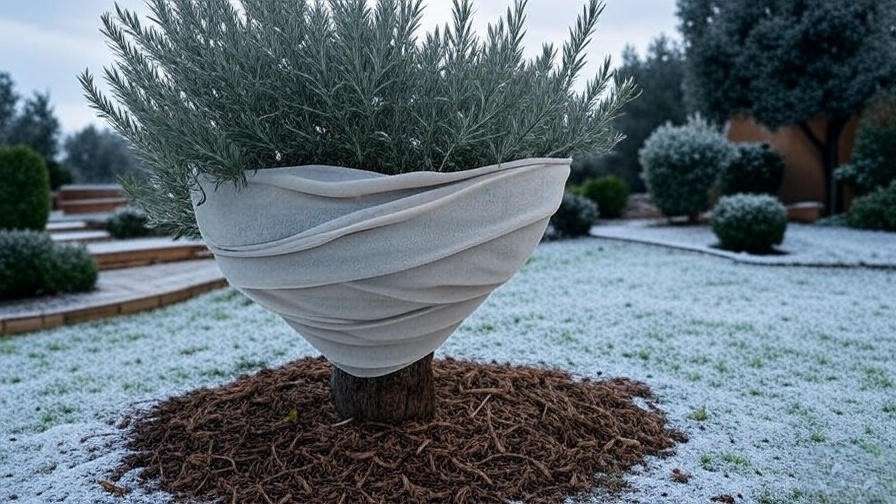
Seasonal Care Calendar:
| Month | Task |
|---|---|
| March | Fertilize, prune, check for pests |
| June | Deep water, mulch, monitor growth |
| September | Reduce watering, prepare for dormancy |
| December | Protect from frost, minimal watering |
Pro Tip: Print this calendar and pin it to your garden shed for quick reference!
7. Troubleshooting Common Wilsonii Olive Tree Problems 🔧
7.1 Yellowing Leaves 🍃
Yellow leaves often signal stress. Common causes include:
- Nutrient Deficiency: Lack of nitrogen or magnesium. Test soil and apply a balanced fertilizer or magnesium sulfate (Epsom salts).
- Overwatering: Soggy soil suffocates roots. Check drainage and reduce watering frequency.
- Poor Drainage: Compacted or clay-heavy soil. Amend with sand or plant in a raised bed.
Solution Steps:
- Test soil pH and nutrients.
- Adjust watering to let soil dry between sessions.
- Apply appropriate fertilizer or amendments.
7.2 Stunted Growth 📉
If your Wilsonii isn’t growing as expected:
- Insufficient Sunlight: Ensure 6–8 hours of direct sun. Relocate container trees if needed.
- Compacted Soil: Aerate soil or repot container trees to loosen roots.
- Improper Fertilization: Avoid high-nitrogen fertilizers that promote leaf growth over roots. Use a balanced formula.
Boosting Growth: Test soil, ensure full sun, and fertilize in spring. If growth doesn’t improve, consult an arborist.
7.3 Dropping Leaves 😢
Leaf drop can result from:
- Environmental Stress: Sudden temperature changes or drought. Maintain consistent care.
- Water Imbalance: Check for over- or underwatering and adjust accordingly.
- Pests/Disease: Inspect for scale or fungal issues and treat promptly.
If problems persist, seek a professional diagnosis from a local extension service or arborist.
Troubleshooting Flowchart:
- Are leaves yellow? → Check watering and soil nutrients.
- Is growth slow? → Verify sunlight and soil conditions.
- Are leaves dropping? → Inspect for pests or environmental stress.
8. Design Ideas: Incorporating Wilsonii Olive Trees into Your Landscape 🏞️
The Wilsonii olive tree is a design chameleon, enhancing various garden styles:
- Mediterranean Garden: Pair with lavender, rosemary, or ornamental grasses for a sun-soaked, rustic look.
- Privacy Screen: Plant in a row to create a lush, evergreen hedge.
- Patio Accent: Use a potted Wilsonii as a focal point on terraces or balconies.
- Minimalist Landscape: Highlight its sculptural form as a standalone feature in gravel or rock gardens.
For small spaces, opt for dwarf Wilsonii varieties like ‘Little Ollie’, which stay under 6 feet tall. Combine with low-water plants like succulents for a cohesive, drought-tolerant design.
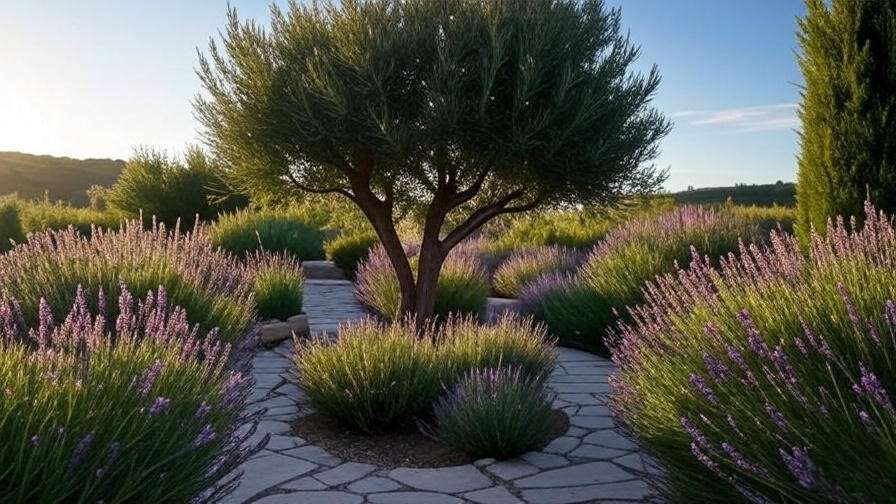
Inspiration Gallery:
- A coastal garden with a Wilsonii centerpiece surrounded by sea lavender.
- A potted Wilsonii on a modern patio with sleek furniture.
- A row of Wilsonii trees framing a Tuscan-inspired courtyard.
Pro Tip: Share your Wilsonii design on Instagram with #OliveTreeInspo for community inspiration!
9. FAQs About Wilsonii Olive Tree Care ❓
Q1: How fast does a Wilsonii olive tree grow?
A: Wilsonii olive trees grow moderately, about 1–2 feet per year under ideal conditions. Proper care (sun, water, nutrients) accelerates growth.
Q2: Can Wilsonii olive trees survive in pots long-term?
A: Yes, with proper care. Use a large pot (18–24 inches), well-draining soil, and repot every 2–3 years to refresh nutrients.
Q3: Do Wilsonii olive trees require a lot of maintenance?
A: No, they’re low-maintenance. Regular watering, light pruning, and occasional fertilization keep them thriving.
Q4: How do I protect my Wilsonii olive tree from frost?
A: Wrap young trees in frost cloths, mulch roots, or move potted trees indoors during freezes below 15°F.
Q5: Why is my Wilsonii olive tree not thriving?
A: Check for overwatering, poor drainage, insufficient sunlight, or pests. Adjust care based on symptoms and test soil.
10. Conclusion: Your Path to a Stunning Wilsonii Olive Tree 🌟
Growing a thriving Wilsonii olive tree is within reach with the right care. By providing full sun, well-draining soil, deep but infrequent watering, and light pruning, you’ll enjoy its timeless beauty for years. Whether you’re crafting a Mediterranean oasis or a modern patio display, the Wilsonii delivers elegance and resilience. Start your journey today, and share your progress in the comments below! For more plant care tips, explore our guides on drought-tolerant landscaping or pruning ornamental trees. Happy gardening! 🌿

